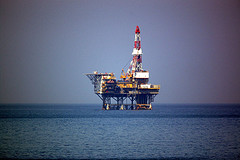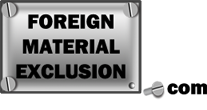
Photo Courtesy of tsuda
The insurance premiums of offshore oil companies will see an increase in the coming years thanks to the Deepwater Horizon oil spill tragedy. There have been talks of both increased rates and coverage requirements for the industry and these costs are expected to be realized by the first of January 2011. The spill raised insurance premiums for operations by 25-30% while drilling premiums may be raised by 100% or more. (The Guardian)
Culture of Complacency
The Deepwater Horizon was reported as showing a culture of complacency rather than a culture of safety. (Los Angeles Times). Insurance companies will be on high alert for companies who have become complacent. With the anticipated hikes in insurance premiums and coverage standards, which kind of company will yours be seen as? Complacent or Safe?
A Case for Safety
One way to keep the increase in insurance premiums to a minimum is to employ novel risk abating procedures like Foreign Material Exclusion practices. The preventative actions put in place with Foreign Material Exclusion Procedures are just the kind of foreword thinking, risk mitigating mindsets that are needed to save money. They will contribute to your company’s culture of safety.
FME in the nuclear industry reduces costs directly by reducing the chances of a damaging incident. One of side-effects of reducing the risk of monetary loss is the reduced risk of an insurance claim. It’s very similar to the safe driving discounts afforded to those drivers who wear seatbelts, employ the use of airbags, or take defensive driving courses. The same thing will happen with offshore rigging for those companies who employ FME practices. They will see lower premiums (or a smaller increase than others might) because they are taking active measures to reduce losses.
The upfront costs of a Foreign Material Exclusion program are very low in comparison to the costs that can be mitigated. Many items in FME work are necessary for normal working procedures anyway and cost a company about the same as similar non-FME parts.
Basic Preventative Measures
While drafting an entire FME plan (or dropped object prevention plan) would be the most effective means of proving a preventative mindset to the insurance companies, there are some simpler small measures that can be taken to get started with very little effort. Some of the simplest measures that can be taken to reduce risk are requiring the use of lanyards on equipment and covering openings when certain systems are under repair. These are two of the most visible parts of a forward thinking FME safety program.
Lanyards and equipment covering alone will not fix a bad safety culture, but they are good for two reasons: One, in the long term, a color theme is a constant reminder of the safety measures in place. Two, as is the case in this situation, the highly visible lanyards and equipment covers will draw attention when your site’s safety is evaluated and may contribute to the perception of a “culture of safety.”
Items with thoughtful design consideration, such as lanyards with non-removable carabineers, shatter proof equipment, or compact fire retardant equipment coverings add to the effectiveness of the safety on the rig. In the long term your sites visible commitment to safety will contribute to the long term cultural safety mentality that is needed to prevent the “culture of complacency.”
This would clearly only be one small part of an increased safety and prevention program but every little bit helps. Any company that can show the insurance underwriters that it is taking active steps in preventative thinking could see a reduced impact of increased insurance costs.


 Use our lanyard selection form and we'll help you get the right lanyards for the job.
Use our lanyard selection form and we'll help you get the right lanyards for the job.
Leave a Reply